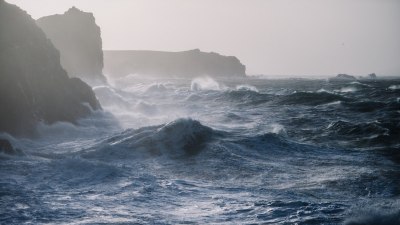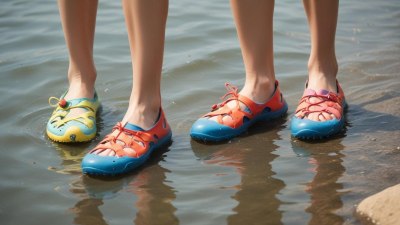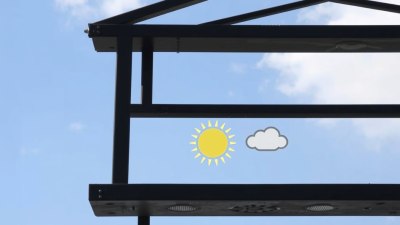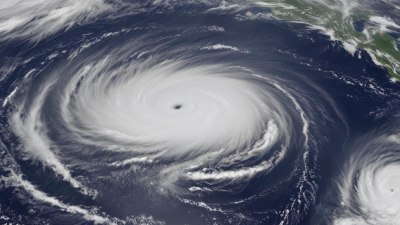The Connection Between Wind and Tides
Explore the fascinating relationship between wind patterns and tidal movements in our oceans.

Understanding the connection between wind and tides involves delving into the complex interactions between various natural forces. Tides, primarily caused by the gravitational pull of the moon and the sun, are influenced significantly by wind patterns. The impact of wind on tides may not be immediately apparent, but it plays a crucial role, particularly in coastal and shallow water regions. As we explore this connection, we will examine how wind generates surface currents, influences tide heights, and affects marine ecosystems.
The Science of Tides
Tides are the periodic rise and fall of sea levels caused by the combined gravitational effects of the moon, the sun, and the rotation of the Earth. The most familiar tidal cycle typically lasts about 12 hours and 25 minutes, resulting in two high tides and two low tides each day. However, the magnitude of these tides is not static; it fluctuates due to several factors such as geographical location, coastline shape, and local weather conditions.
Wind and its Impact on Ocean Currents
Wind plays a significant role in shaping ocean currents, which in turn influence tidal behavior. As wind blows across the ocean's surface, it transfers energy that generates currents. These currents can redirect the flow of water and alter local tidal patterns. For example, strong winds blowing in one direction can push surface water, leading to the displacement of water in nearby coastal areas. Such actions can cause changes in tidal levels, often resulting in higher or lower than normal tides.
Wind and Tidal Range
The relationship between wind and tidal height—or tidal range—is particularly evident during storm events. Strong winds associated with storms can elevate sea levels significantly. This phenomenon occurs as winds create storm surges, which push water up onto the shore, raising water levels higher than predicted. Consequently, even during a time of low tide, coastal areas may experience substantial flooding if a storm surge coincides with the tidal cycle. Such events highlight the vulnerability of coastal communities to changes in wind patterns.
Local Variations in Wind Influence on Tides
The extent of wind's influence on tides varies by location. In some regions, wind-driven currents may have a more pronounced effect on tidal heights, while in others, the gravitational pull dominates the tidal patterns. Coastal areas with extensive bays or estuaries may experience a more significant influence from wind due to the funneling effect, which can amplify wave energy and tidal range. Understanding local geographical features is essential for interpreting how wind interacts with tides in a given area.
Case Studies: Understanding Wind and Tides Relationships
Case studies in various regions illustrate the connection between wind patterns and tidal behavior. For instance, studies conducted in the Chesapeake Bay area show how strong westerly winds can dramatically alter tidal ranges, resulting in tidal heights that differ significantly from expected norms. The unique shape of the bay funnels wind energy, amplifying its impact on water levels during specific wind events.
Seasonal Changes and Wind Influence
Seasonal variations in wind patterns also contribute to changes in tidal behavior. In winter, strong, cold winds often lead to higher tidal ranges due to increased storm activity in many coastal regions. Conversely, calm summer winds may lead to lower tidal ranges as water remains more stable. These seasonal shifts not only affect tidal heights but also have implications for marine life, as organisms adapted to specific tidal conditions may struggle during atypical tidal cycles.
The Role of Atmospheric Pressure
Atmospheric pressure is another critical factor in understanding the connection between wind and tides. Wind patterns are affected by variations in atmospheric pressure; in turn, these pressure variations can also influence tide levels. Low-pressure systems, which often accompany storms, can lead to elevated sea levels, reinforcing the concept that the interconnectedness of different natural phenomena is critical to understanding coastal dynamics.
Wind Energy and Tidal Energy Interaction
As society increasingly embraces renewable energy sources, the interaction between wind energy and tidal energy has gained interest. Both energies result from similar natural forces, yet they exhibit distinct characteristics and potential benefits. Wind energy generation typically occurs away from coastlines, while tidal energy relies on the predictable rise and fall of ocean waves caused by tidal forces. Understanding their relationship can aid in optimizing the placement of offshore wind farms and tidal energy installations, ensuring minimal conflict between the two burgeoning industries.
Implications for Climate Change
Climate change impacts both wind patterns and tide behavior, leading to complex interactions that warrant attention. Changes in global temperatures affect wind patterns, while rising sea levels due to glacial melting further influence tidal behavior. The overall result is a dynamic coastal environment where understanding the connections between wind and tides becomes increasingly crucial. Coastal planners must consider these interactions to mitigate the risks posed by climate change on vulnerable coastal ecosystems and communities.
The connection between wind and tides is multifaceted and essential for understanding coastal dynamics. Wind influences tidal patterns by affecting ocean currents, altering tidal ranges, and even causing storm surges. Local variations in wind patterns and geographical features further modulate these effects, leading to unique tidal behaviors in different regions. As climate change continues to alter wind patterns and sea levels, understanding this connection becomes vital for coastal resilience and marine conservation. Through continued research and monitoring, we can better appreciate the intricate relationships between these natural forces and their implications for our planet's future.











